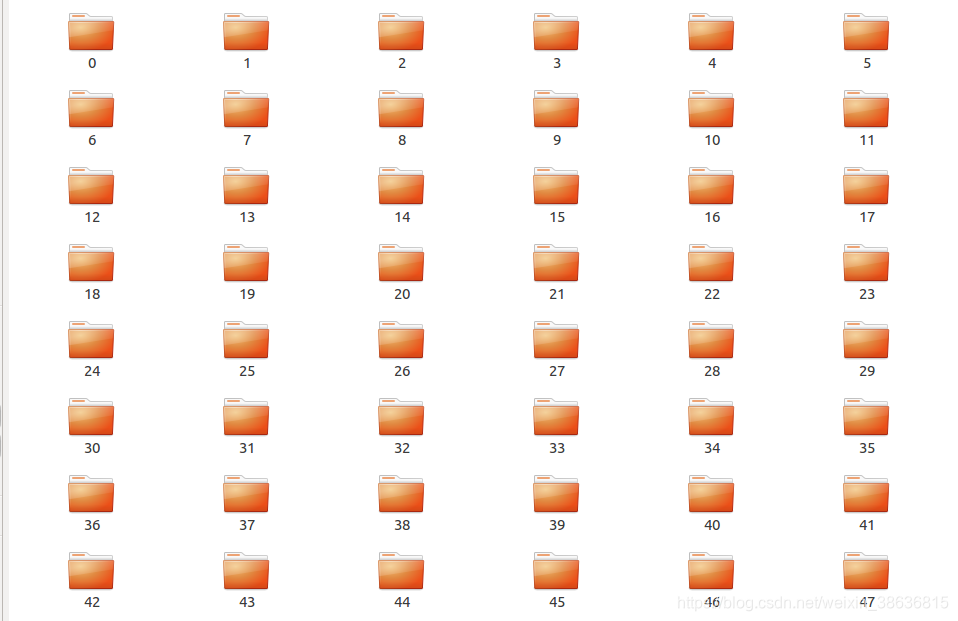目的:因為需要保存一個大大的.mp4視頻,以防過程中設備出現異常導致整個長長的視頻無法正常保存,所以采用分段保存視頻的方式,每500幀保存一段,然后再將視頻合到一起.最近剛開始學習python,發現python真的很好用,所以這次就使用python中的moviepy庫來完成視頻的合并.
一.安裝moviepy
1. 你首先嘗試使用 pip install moviepy指令是否可以正常安裝moviepy庫(我在python2.7上和python3.7上都嘗試了這中安裝方式都安裝不了,所以不得不采用下面這個方式)
2.采用source文件安裝.參照 https://blog.csdn.net/ucsheep/article/details/81000982 下載這個庫的source文件,然后按照目錄下的 README.rst 的指示安裝,
首先cd到你下載的目錄文件下,順序執行
$ (sudo) pip install ez_setup
$ (sudo) python setup.py install?
如果有錯誤提示
ERROR: moviepy 1.0.3 has requirement imageio<2.5,>=2.0, but you'll have imageio 2.8.0 which is incompatible.那么就執行
pip install imageio二.使用moviepy庫合并多個視頻
我的目錄框架是這樣的,

?
上面的每個文件目錄下的文件是這樣的.
 ?Bluetooth文件目錄
?Bluetooth文件目錄
 ?wifi文件目錄
?wifi文件目錄

?首先是將目錄下的所有視頻都合并到一起
下面的代碼實現視頻的合并,文件的合并,多個文件夾下文件的歸并
# -*-coding:utf-8-*-
# this python script is to concatenate a sequence of videos into one# import cv2from moviepy.editor import *
import os
import linecache
import shutil#inputVideoPath = "/media/yunlei/Seagate/collection_device_data/20200603/大仟里L2主干道大圈-1591150453197/"
# outputVideoPath = "/media/yunlei/Seagate/collection_device_data/20200603/concatenated/大仟里L2主干道大圈-1591150453197/"
inputVideoPath = "/media/yunlei/Seagate/collection_device_data/20200603/大仟里L2主干道-1591155992285/"outputVideoPath = "/media/yunlei/Seagate/collection_device_data/20200603/concatenated/大仟里L2主干道-1591155992285/"def videoconcatenate(left_right_depth):print("this function is to implement concatenation")dirs = os.listdir(inputVideoPath)videoList = []videoCount = 0for videoDir in dirs:videoName = inputVideoPath + str(videoCount) + "/" + left_right_depth + ".mp4"if os.path.exists(videoName):videoElement = VideoFileClip(videoName)videoList.append(videoElement)videoCount = videoCount + 1concatenateProcessLeft = concatenate_videoclips(videoList)concatenateProcessLeft.to_videofile(outputVideoPath + "/" + left_right_depth + ".mp4", fps = 20, remove_temp = False)def combinefiles(fileName):print("start to comebine files")#This list is used to store all file datafilePathList = []fileDataList = []fileCount = 0filePathes = os.listdir(inputVideoPath)for filePath in filePathes:fileType = inputVideoPath + str(fileCount) + "/" + fileName + ".txt"if os.path.exists(fileType):filePathList.append(fileType)# print(fileType)fileCount = fileCount + 1totalline = 0for fileElement in filePathList:lineNumber = 1fileLength = len(open(fileElement, encoding='utf-8').readlines())totalline = totalline + fileLength#print(fileLength)while lineNumber <= fileLength:line = linecache.getline(fileElement, lineNumber)#print(line)line = line.strip()fileDataList.append(line)lineNumber = lineNumber + 1print(totalline)fileAll = open(outputVideoPath + "/" + fileName + ".txt", 'w+', encoding='utf-8')for i, p in enumerate(fileDataList):print(i,p)fileAll.write(p+'\n')fileAll.close()def combineFolders(folderName):folderList = []folderCount = 0outputFolderPath = outputVideoPath + "/" + folderName + "/"folderPathes = os.listdir(inputVideoPath)print(folderPathes)for folderPath in folderPathes:folerType = inputVideoPath + "/" + str(folderCount) + "/" + folderNameprint("folderType")print(folerType)print("start to copy file")if os.path.exists(folerType):filesInFolder = os.listdir(folerType)print("filesInFolder")print(filesInFolder)for fileInFolder in filesInFolder:totalPath = folerType + "/" + fileInFolderprint("print totalPath")print(totalPath)if not os.path.exists(outputFolderPath):os.mkdir(outputFolderPath)outputFileName = outputFolderPath + "/" + fileInFoldershutil.copyfile(totalPath, outputFileName)folderCount = folderCount + 1#define the main function,from this function your users functions are called
def main():# combine Bluetooth foldercombineFolders("Bluetooth")# combine wifi foldercombineFolders("wifi")# concatenate video leftvideoconcatenate("left")# # # concatenate video rightvideoconcatenate("right")# # #concatenate video depthvideoconcatenate("depth")# combinefiles("video_time")combinefiles("Camera_time")# combinefiles("Bluetooth_times")combinefiles("wifi_times")
#the entrance of this projrct
if __name__ == "__main__":main()?
因為是剛學習python所以很多時候并不知哪個用法更合適,所以那就嘗試一下,比如下面這兩個遍歷路徑下的文件的方式,
for videoDir in dirs:這種,會將dirs路徑下的所有文件都獲取到,如果比如說我這里的路徑下就包括了文件加和文件,而我希望對文件夾做處理,所以我就要先將文件夾挑揀出來.下面就是我只檢索那些是文件夾,并且文件夾上有.mp4格式視頻的文件目錄我才把他們count in.
videoLeft = inputVideoPath + str(videoCount) + "/" + "left.mp4"videoRight = inputVideoPath + str(videoCount) + "/" + "right.mp4"videoDepth = inputVideoPath + str(videoCount) + "/" + "depth.mp4"if os.path.exists(videoLeft):第二種,這種os.walk(path)的方式可以返回root就是根目錄path,dirs就是root目錄下所有的文件夾,以及文件夾下的文件夾,files就是root path下所有的文件.所以你需要根據你的需求來選擇使用哪種遍歷方式.
for root, dirs, files in os.walk(inputVideoPath):for name in files:print(os.path.join(root, name))for name in dirs:print(os.path.join(root, name))
print(len(videoLeftAll))?







--異常)
)






)



